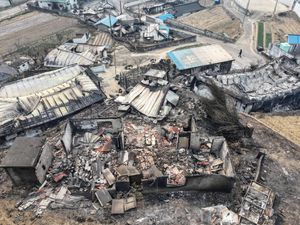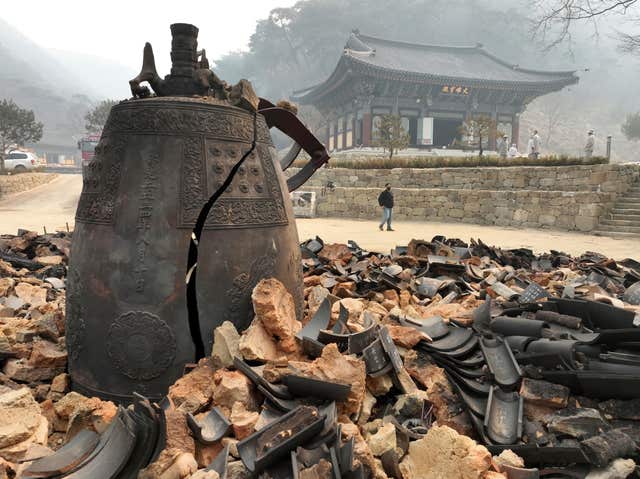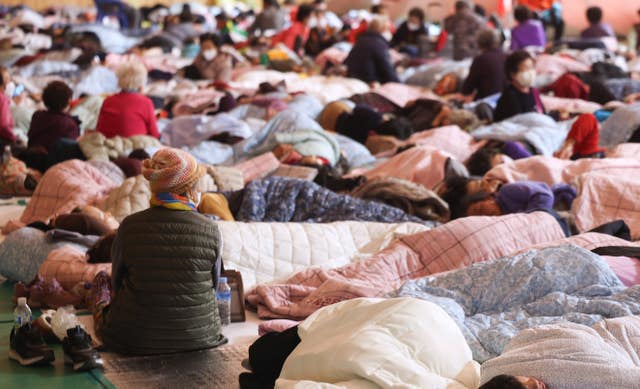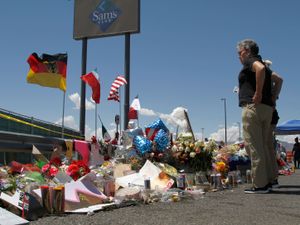Helicopter aiding efforts to tackle wildfires in South Korea crashes
Fire crews are battling some of South Korea’s worst wildfires in southern areas.

South Korean officials say a helicopter crashed during efforts to contain wildfires in the south-eastern town of Uiseong.
The Korea Forest Service said on Wednesday that rescue efforts were underway and it was presumed the aircraft was operated by one pilot with no crew members.
Fire crews are battling some of South Korea’s worst wildfires in southern areas with at least 18 deaths and more than 200 structures destroyed.
An ancient Buddhist temple, houses, factories and vehicles were among the structures destroyed in the wildfires, which have burned 43,330 acres and injured 19 people, the government’s emergency response centre said.

In a televised address, South Korea’s acting President Han Duck-soo said the wildfires which began last Friday were causing worse damage than many other past wildfires.
“Damages are snowballing,” Mr Han said.
“There are concerns that we’ll have wildfire damages that we’ve never experienced, so we have to concentrate all our capabilities to put out the wildfires in the rest of this week.”
Mr Han said crews were struggling to extinguish the wildfires because strong winds swept the areas overnight. He said about 4,650 firefighters, soldiers and other personnel were working on Wednesday to extinguish the wildfires with the help of about 130 helicopters.
He said that “a small amount” of 5-10 millimetres of rain was expected on Thursday.
Observers say the ongoing wildfires are the third biggest in South Korea in terms of land burned.
Officials in several southeastern cities and towns had ordered residents to evacuate on Tuesday as firefighters struggled to contain multiple blazes fuelled by dry winds.
The largest fires were in Andong, the neighbouring counties of Uiseong and Sancheong, and the city of Ulsan, according to South Korea’s Interior Ministry.

Earlier on Tuesday, officials had said firefighters had extinguished most of the flames from the largest wildfires in those areas, but wind and dry conditions allowed the blazes to spread again. But efforts to fight the fires were partially suspended overnight as the winds strengthened.
The blaze in Uiseong destroyed nearly half of more than 30 structures at Gounsa, a temple which was said to be originally built in the 7th century.
Among the destroyed structures were two state-designated “treasures” — a pavilion-shaped structure on a stream built in 1668 and a Joseon Dynasty structure built in 1904 to mark the longevity of a king.
The Korea Forest Service said it had raised its wildfire warning to the highest “serious” level nationwide on Tuesday, requiring local governments to assign more workers to emergency response, tighten entry restrictions for forests and parks, and recommend that military units withhold live-fire exercises.
The 18 dead include four firefighters and government workers who were killed in Sancheong on Saturday after being trapped by fast-moving flames driven by strong winds, according to officials.
Government officials suspect human error caused several of the fires, possibly due to the use of fire while clearing overgrown grass in family tombs or sparks from welding work.





